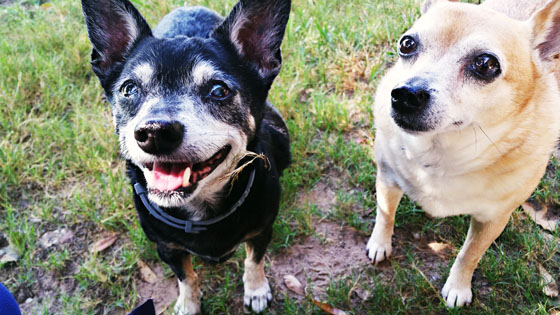 Many people often believe that dogs can’t actually see what is going on when they watch TV—but is that true?
Many people often believe that dogs can’t actually see what is going on when they watch TV—but is that true?
And what about modern TVs — does the higher resolution of the new screens better enable dogs to see what is going on? Because modern TVs now generate more frames per second, dogs can perceive the pictures as film, just like we do.
Can Dogs Watch TV?
Blending a rapid set of images into what our eyes register as a moving picture is called flicker fusion frequency. Compared to old TVs that could only produce up to 50 new frames a second, new TVs are much smoother.
It varies from animal to animal with regard to how many frames they need to see per second before it fools their eyes and brains into viewing it as a moving picture, rather than a flickering image on a screen.
Canine Channels
People need about 16 to 20 images a second to perceive what we see as continuous film, whereas dogs need about 70 images per second. So a few years ago, dogs were probably confounded by their owner’s behavior of sitting for hours staring at a flashing succession of images. However, with modern resolution and quicker imaging, dogs have now become potential television viewers.
Dogs that watch TV has not gone unrecognized, as many hopeful TV producers in the U.S. have started special TV channels for dogs. Other pets, however, you may need to think twice before placing them in front of the TV.
Birds, for example, need at least 100 frames per second to see TV images as a moving picture. Having a bird in the same room as a TV with a lower frame rate than that can be extremely stressful for the creature. This can be like putting you in a room with strobe lights, like in a discotheque, which can be very overwhelming. Nevertheless, while dogs can now see what’s happening on the TV screen, they still don’t see the same as we do.
More Cones for Better Color
While dogs can see colors, they don’t see the same colors humans see. Color vision comes from cone cells, which are receptors on the retina. Seeing colors requires at least two different kinds of cones. Dogs have two cones, and we as humans have three. This means that what we perceive as red will be seen by dogs as yellowish or white. These cones also affect our perception of details, so dogs have poorer detail vision than we do.
Spotting Birds
Dogs see TVs as well as we can, but it is relative to their general vision. While they can see details on the new TVs, they can’t see them completely clearly. Dogs can see a bird flying across the TVs screen in about as much detail as they see it in nature. This is why many dogs will jump at the TV when a wolf or horse suddenly turns up right in the living room. It should also be noted that not all dogs necessarily see equally well either.
How Do Canine Eyes Change Over the Years?
Nuclear Sclerosis vs. Cataracts
As dogs age, just as for people, there are normal changes that occur, especially with the eyes. Nuclear sclerosis is a normal aging change of the lens. The lens is made up of layers of cells which are arranged somewhat like the layers of an onion. As dogs get older, the cells become packed together more tightly as new layers are added. This increases the density of the lens, resulting in it looking cloudy in dogs over about 7 years of age. The lens will continue to appear cloudier over time. Nuclear Sclerosis is often mistaken as a Cataract, which is a different issue that also causes the lens to become cloudy. A cataract is an abnormality that can cause blindness and inflammation inside the eye, while nuclear sclerosis is normal for an older dog, and the condition has minimal effect on vision. Similar for middle-aged people who need reading glasses, a dog with nuclear sclerosis will not be able to see well up close, so such tasks as going down stairs and catching a small treat may be more difficult.
Weak Night Vision
Another normal aging change that occurs in dogs is in the retina where the cell layers responsible for night vision become thinner. This is also a slowly progressive change. You may even notice that your dog hesitates when going outside at night. It can be helpful to turn on more lights. This normal aging changes in dogs must be distinguished from Progressive Retinal Degeneration which is an inherited condition that results in blindness.
Light Sensitivity
Older dogs can develop a weakness in the muscle in the iris that constricts in the pupil. These dogs may be light sensitive. If their lens is also cloudy, this may be more noticeable through their larger pupil, which increases the cloudy appearance of the eye.
Both of these changes are normal, very slowly progressive and should never cause significant issues.
Don’t hesitate to contact us here at All Pets Veterinary Medical Center with the link below for more information or if you notice any changes in your dog’s vision!















